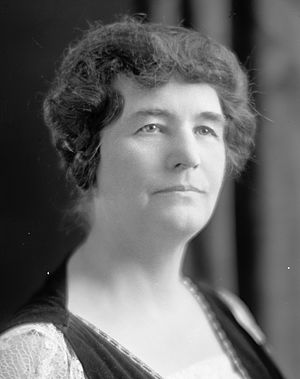Fannie Fern Andrews facts for kids
Quick facts for kids
Fannie Fern Andrews
|
|
|---|---|
 |
|
| Born | 25 September 1867 Middleton, Nova Scotia, Canada
|
| Died | 23 January 1950 (aged 82) |
| Education | Psychology and Education (Radcliffe College, Harvard Summer School) |
| Spouse(s) | Edwin G. Andrews (July 16, 1890) |
Fannie Fern Andrews (1867–1950) was an American speaker, teacher, social worker, and writer. She worked hard to promote peace and understanding through education. She believed that teaching young people about different cultures could help prevent conflicts.
Contents
Who Was Fannie Fern Andrews?
Fannie Fern Phillips was born on September 25, 1867, in Middleton, Nova Scotia, Canada. She had a twin brother named Frank Edward. Her parents were Annie M. and William Wallis Phillips.
When Fannie was young, her family moved to Lynn, Massachusetts. Later, they moved to Salem. She went to public schools there. She also graduated from the Salem Normal School.
On July 16, 1890, she married Edwin G. Andrews. She taught school for six years. In 1902, she earned a degree in psychology and education from Radcliffe College. She also studied at Harvard Summer School.
Helping Students and Families
In 1907, Fannie Andrews started the Boston Home and School Association. Her goal was to get parents more involved in their children's education. She worked in public schools in Boston. She saw that students from different backgrounds sometimes had trouble understanding each other.
She believed that if people learned about other ethnic groups and different ways of life, they could communicate better. This understanding, she thought, would help them solve problems peacefully.
Working for Peace Through Education
In 1908, Andrews founded the American Peace League. This group wanted to teach students in American schools about "international justice." This means being fair and just to all countries. She dreamed of creating an international education office. This office would help all nations understand each other better.
When World War I started, Andrews changed her organization's name. In 1918, it became the "American School Citizenship League." This name showed her focus on teaching good citizenship to young people.
A Voice at the Peace Conference
In 1918, President Woodrow Wilson chose Fannie Andrews to attend the Paris Peace Conference. This was a big meeting after World War I to decide on peace terms. She also took part in the Inter-Allied Women's Conference happening at the same time.
Andrews tried to convince leaders to include her idea for an international education office in the League of Nations. The League of Nations was a new group formed to promote world peace. However, her idea was not accepted at that time. Some thought that different cultures were too varied for one standard way of teaching. But her ideas eventually helped lead to the creation of the International Bureau of Education in Geneva.
Later Life and Legacy
Fannie Andrews continued her education. In 1920, she earned a Master of Arts degree. In 1923, she completed her PhD at Harvard. She became a well-known speaker on education in Europe and America.
She was a secretary and organizer for the American School Citizenship League. She was also a member of important groups like the advisory council of the Institute of International Education. She attended the International Conference on Education in 1914. She also represented the United States Bureau of Education at the Peace Conference in Paris.
Andrews strongly supported peace education. She worked to change school lessons to include these ideas. Today's Civil Education classes, which teach about citizenship and government, are partly a result of her efforts.
Fannie Fern Andrews passed away on January 24, 1950. She was buried at Mount Auburn Cemetery.
Books and Writings
- The United States and the World (1918)
- The World Family (1918)
- The War - What Should Be Said about it in the Schools? (Boston, 1914)
- Central Organization for a Durable Peace (Boston, 1916)
- Freedom of the Seas (The Hague, 1917)
- A Course in Citizenship and Patriotism (:Houghton Mifflin, 1918)
- A Course in Foreign Relations, prepared for the Army Education Commission (Paris, 1919)
See also
 In Spanish: Fannie Fern Andrews para niños
In Spanish: Fannie Fern Andrews para niños

